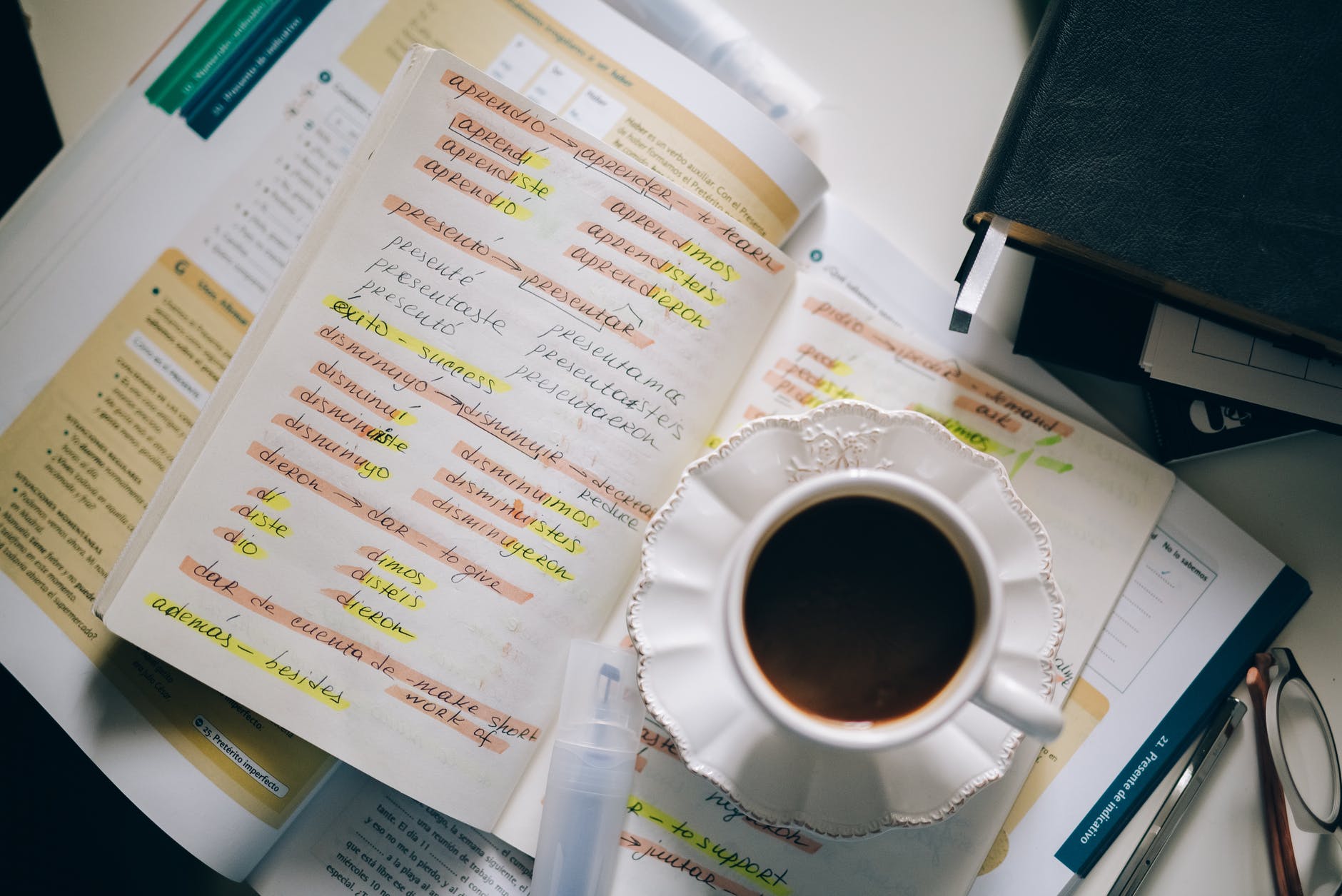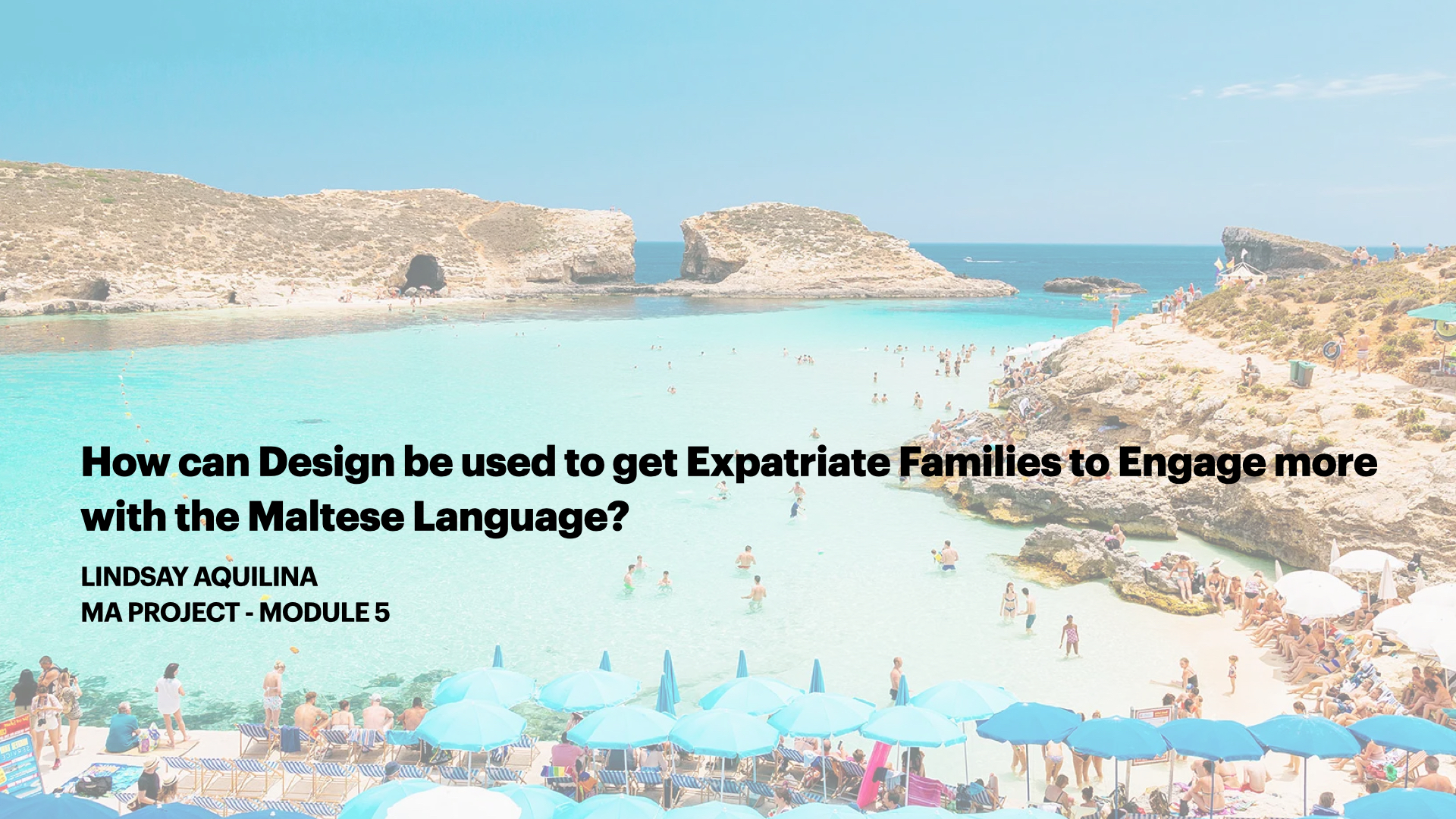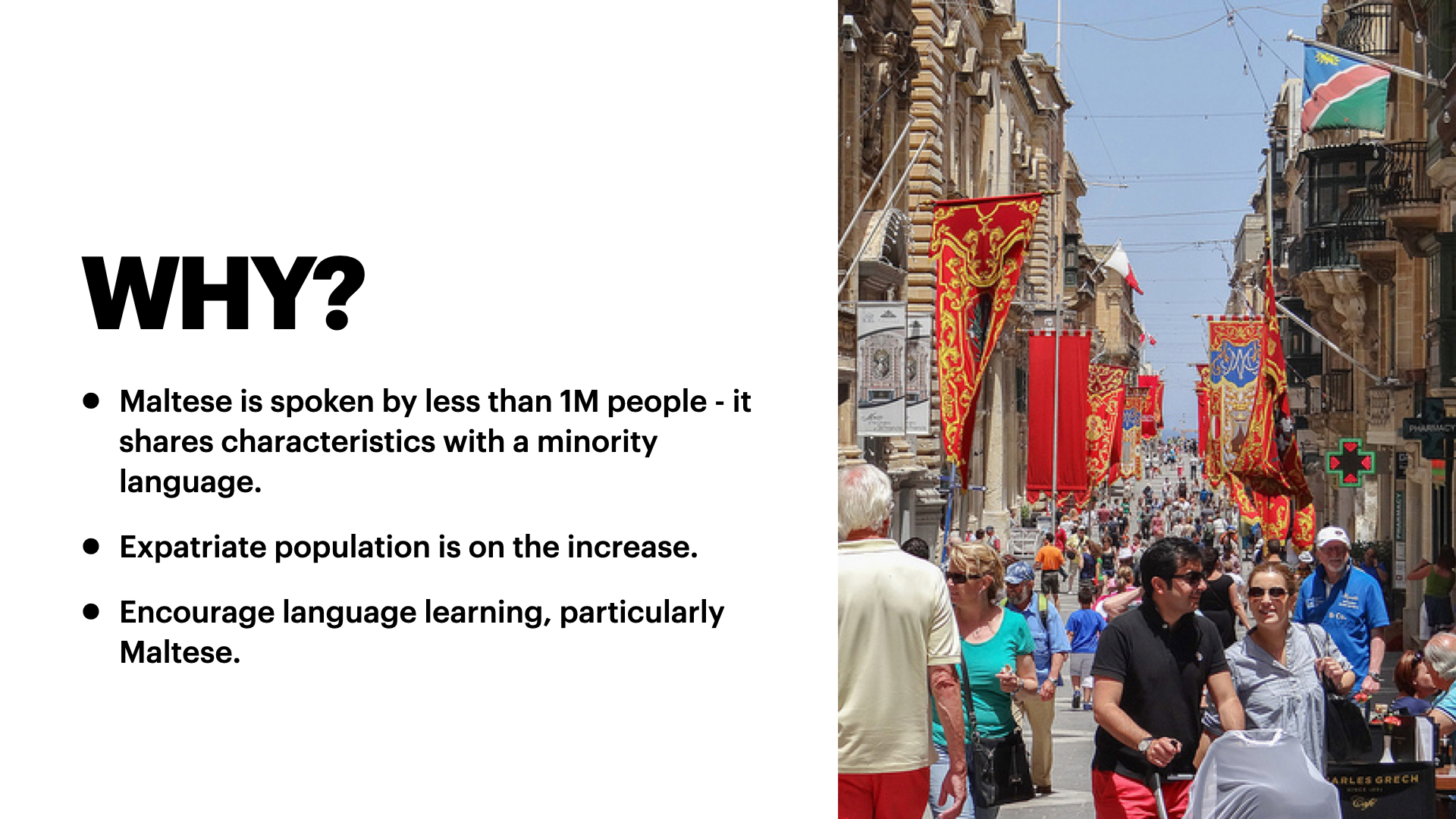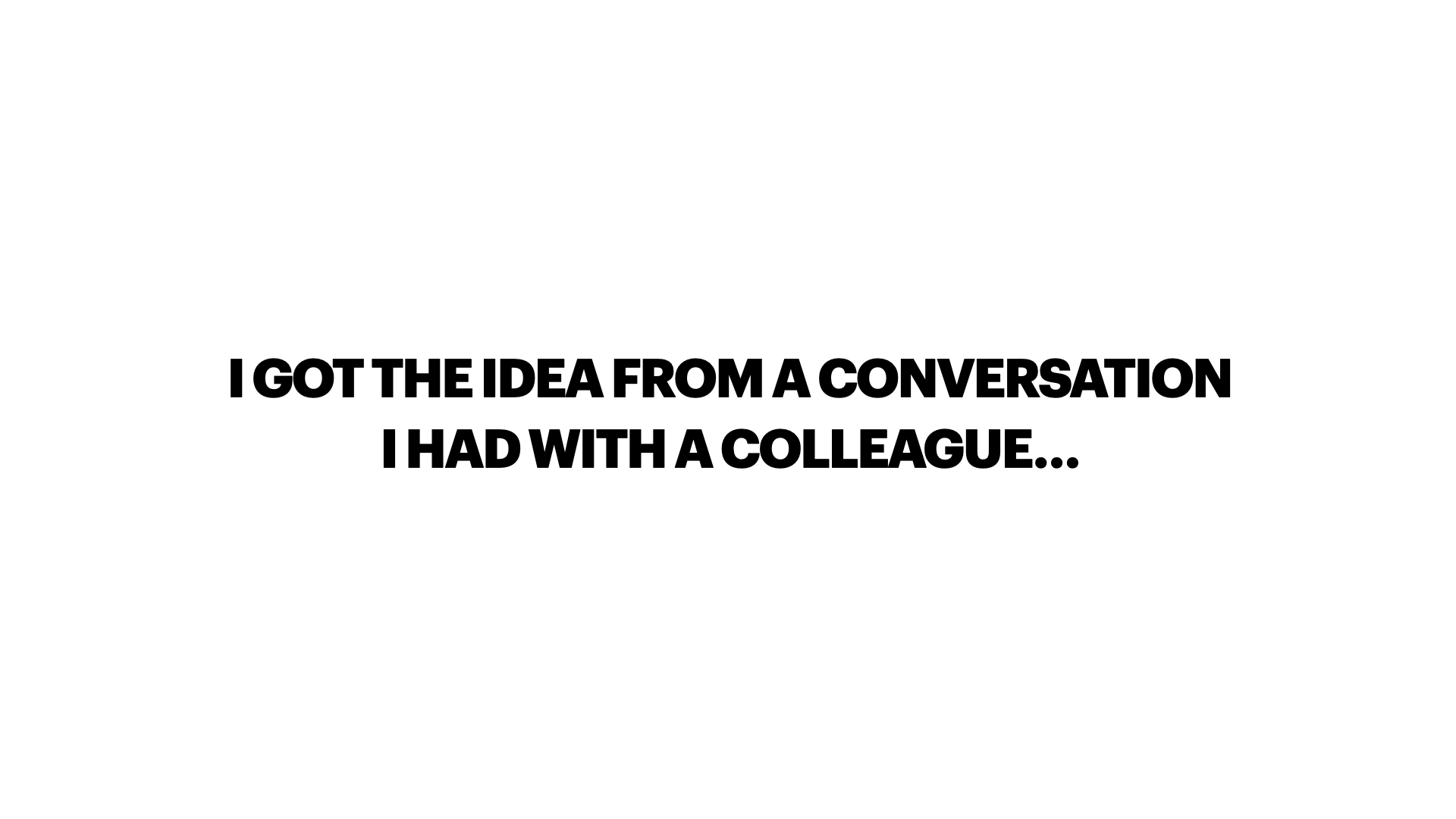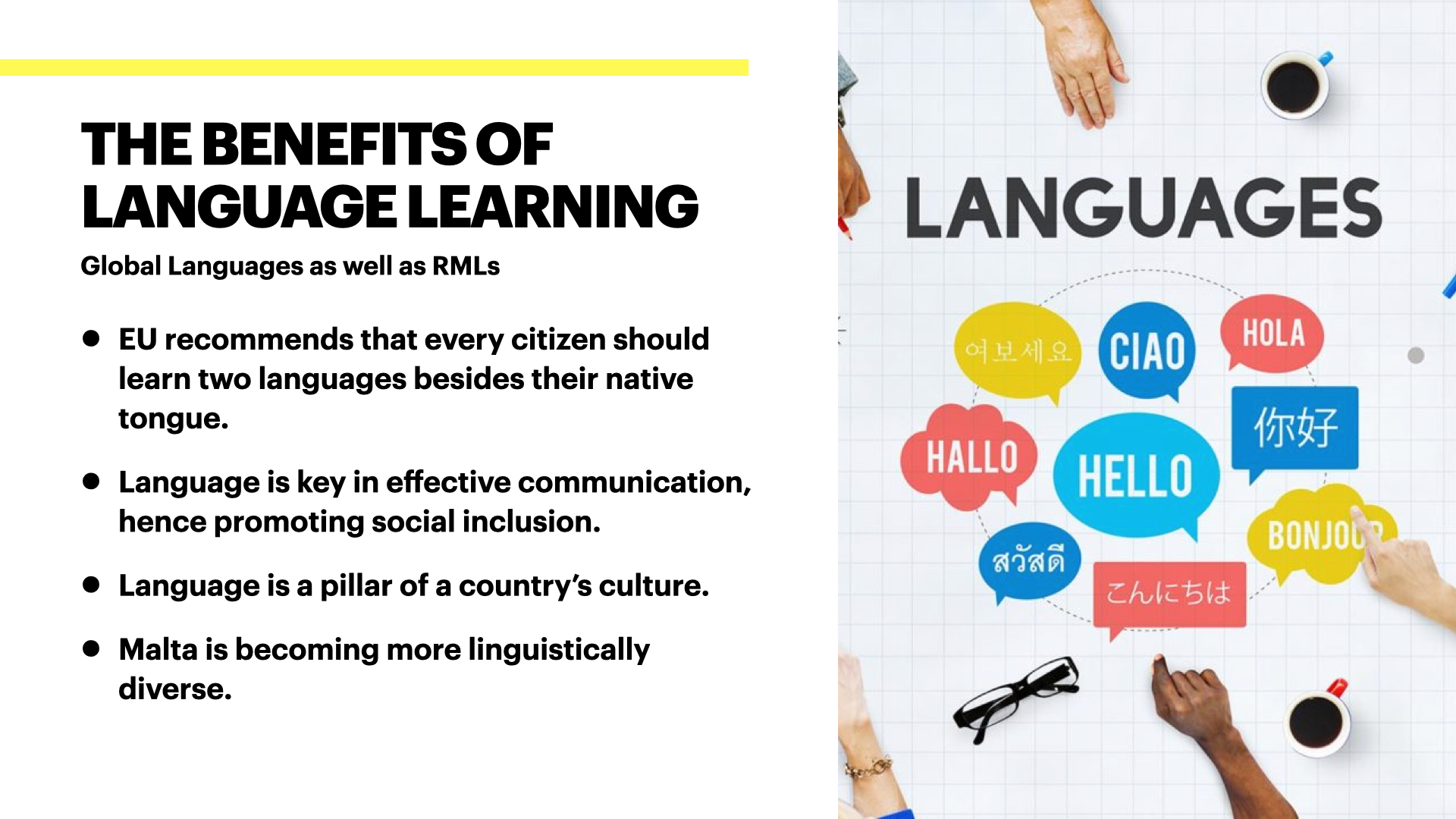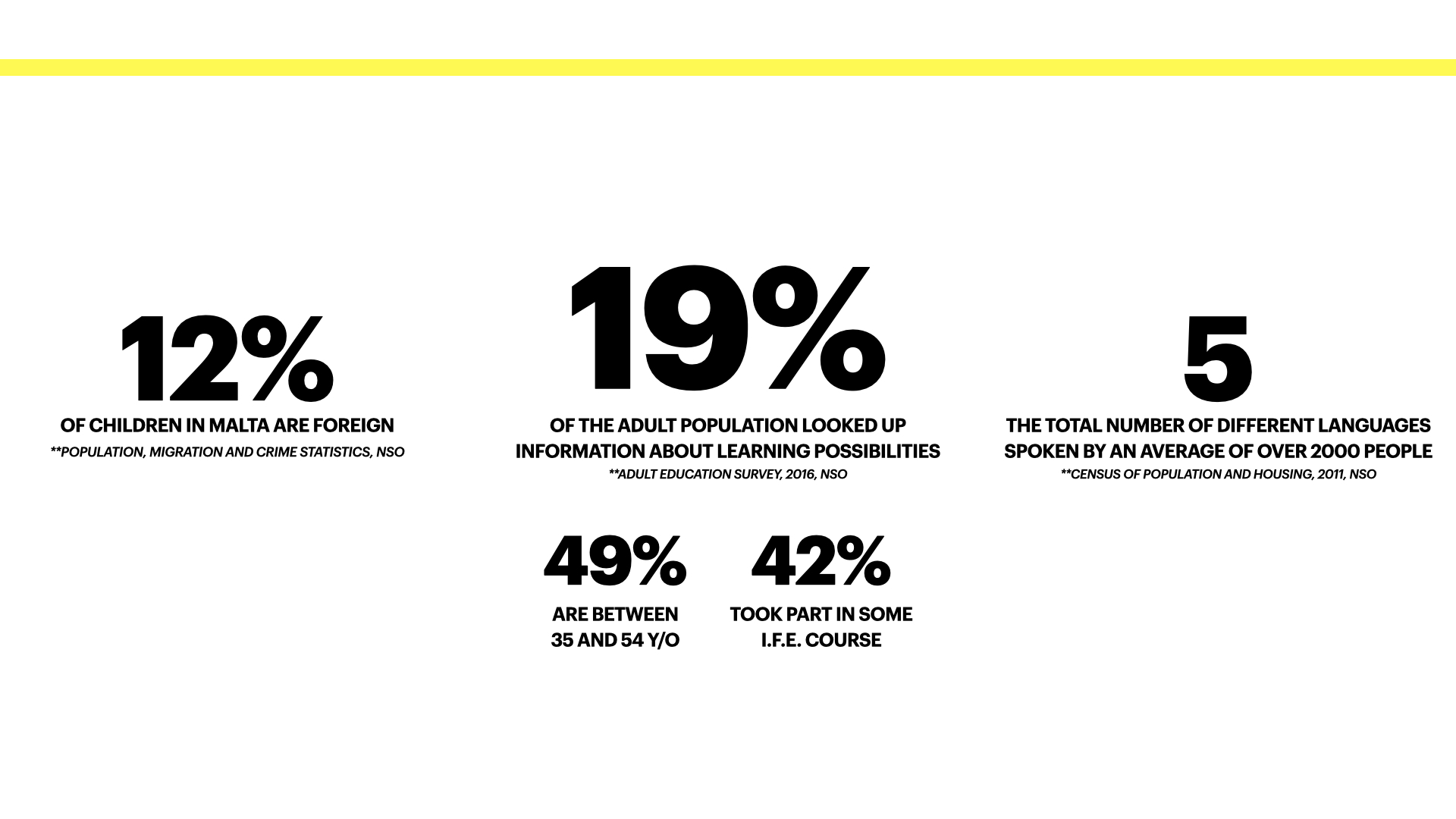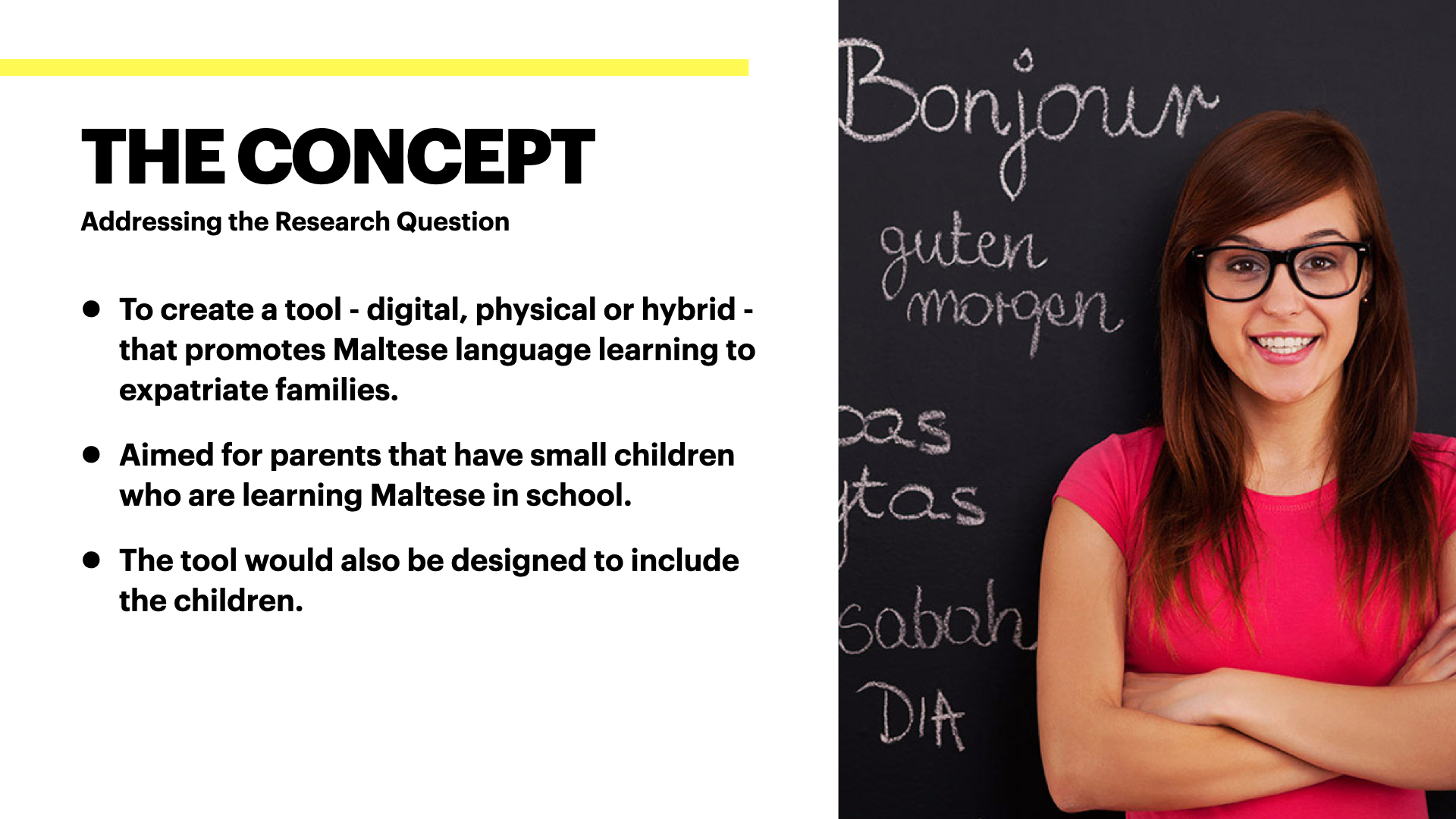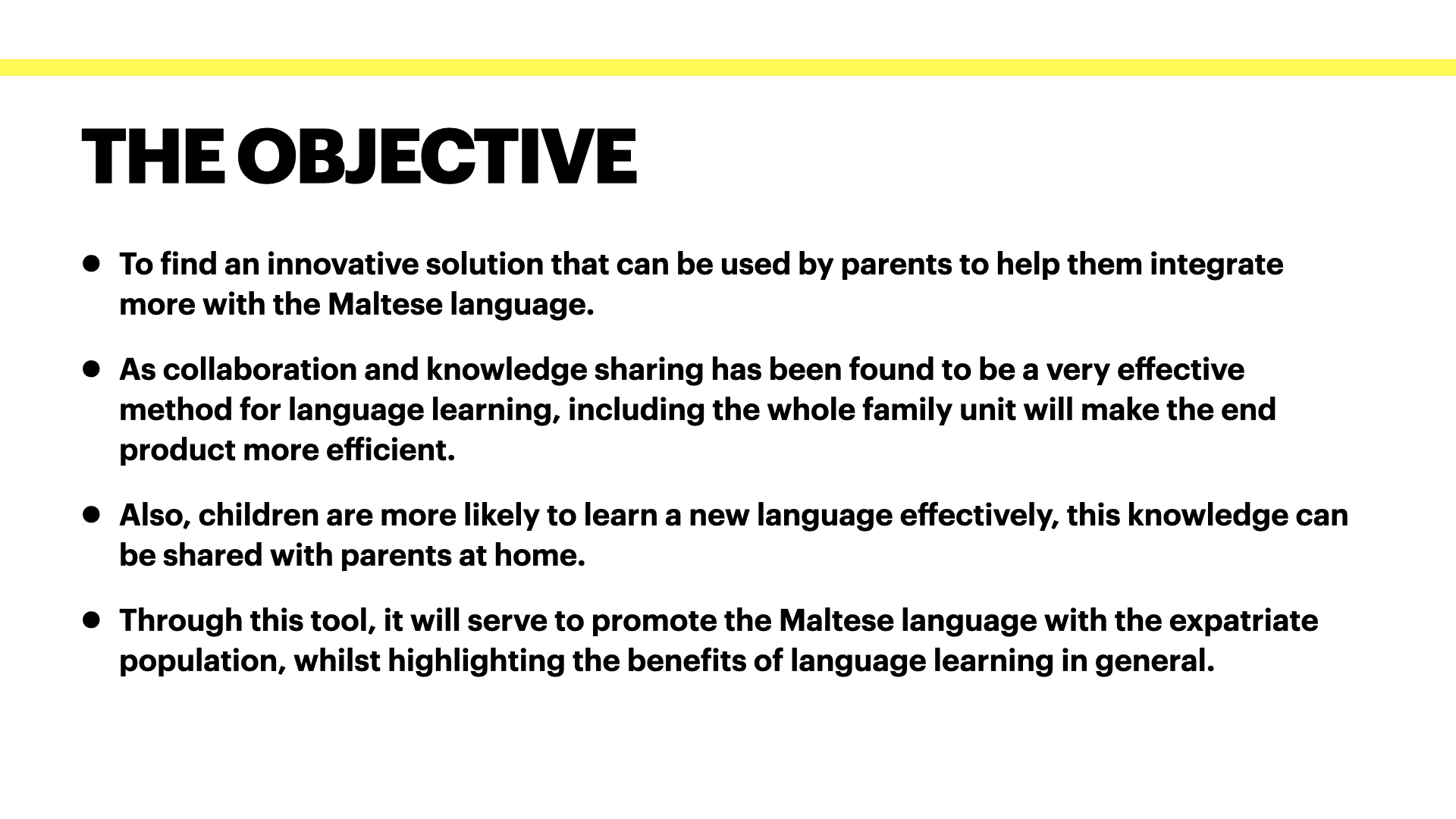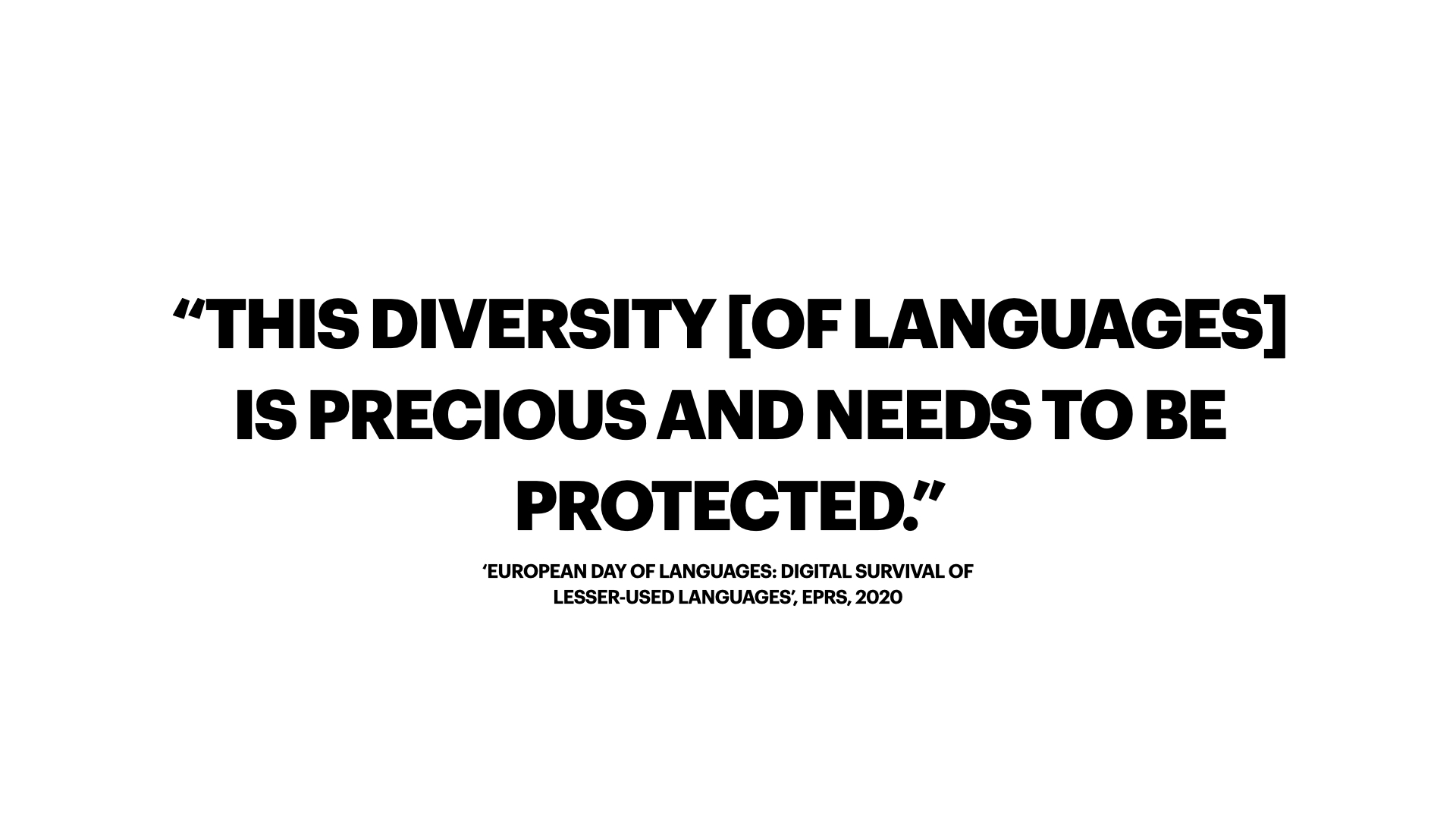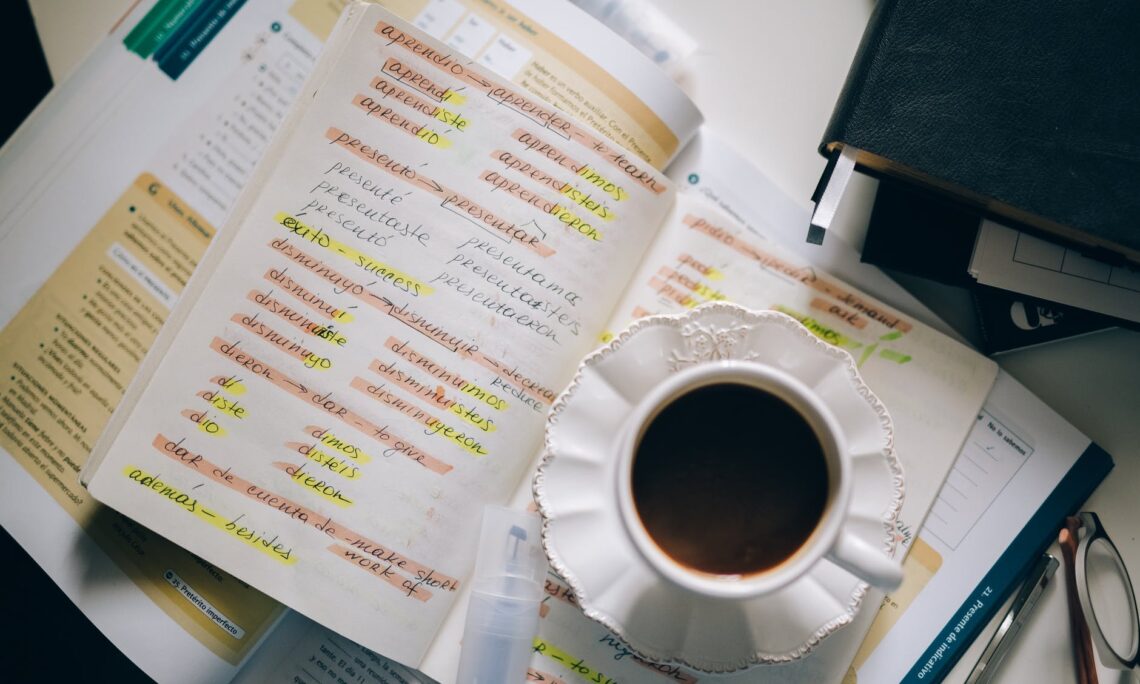
From Research to Case Study: Presenting the Project and gathering Feedback.
The final deliverable for this second phase was to put together a case study and present it to a number of designers working in various creative fields. Like I said in previous posts, I bounced off slightly between target audiences, reason being that I was looking for that audience that is narrow enough to focus but at the same time, it can substantiate my project enough. Hence why I went for expatriate families.
The task at hand was relatively straight forward. My problem was how to present the information in a way that is concise and understandable. I had been reading numerous articles, and very often when it came to language learning, the article discussed specific teaching methods and/or how teaching languages has evolved. Separately, I was also looking at data relation to population growth, education surveys and even population distribution to get a clearer picture of how Malta’s demographic was changing as well as articles and data related to language evolution and diminishing languages.
As it turned out, I was not the only one with this issue in my cohort. In fact, we had a discussion on how we are going to present our case studies in one of our peer meetings, and by the end of it, we came up with a framework that we can use. That session had helped me a lot in putting my presentation together.
Putting Together the Presentation
Below you can find the complete presentation of my case study. You can also read more about it here. In a nutshell, I wanted to show the research I did so far, including language learning benefits, the aims, objective, as well as some numbers to help in consolidating what I was saying in my presentation.
The Feedback
I was pleased with the response I got from the panel. The question they posed to me was how I bring it back to my practice i.e. Graphic Design. It was something that I was expecting to be fair, as it stands to reason that I would have an idea of what the outcome will be, which is something that I need to decide. The idea of starting off with the children as they learn the language quicker was welcomed and the panel agreed with that statement. Also, one of the designers in the panel mention YOTO – it is a toy where is it a story-telling speaker for children.
Others suggested that I would reflect also on the culture and define what makes the language special. I was not planning to include the cultural aspect in the research, as that was my initial research question before I was asked to narrow it down even more. However, I think that exploring the cultural and historical elements that directly impact the language, I think it is a good way to go.
Joining the Dots
The challenged I faced these past weeks was to ‘connect the dots’ – combining the research I did so far and build an argument. This presentation helped in framing better my research question. However, I still have to sit and write that literature review. I have the themes sorted (you can read more here), now I just need to start chipping away and build my argument.

